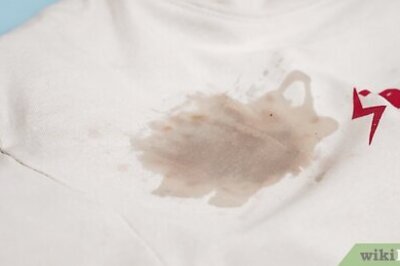
views
PUDUCHERRY: The Reserve Bank of India (RBI) has made the desktop note sorting machines (NSM) compulsory in all banks, where the average daily receipts exceed Rs 50 lakh, to filter fake notes at the entry point, said S Nandhakumar, assistant manager, current issue department, RBI, Chennai.Giving a presentation along with his colleague V K Krishnamurthy at the fake currency detection workshop organised by Puducherry police, on Tuesday, he said that a circular had been issued to banks to use the NSM as only it was capable of reading the latest security features incorporated in currency notes.However, he said that it was not fool-proof and the machines would only sort out suspected notes. Sometimes due to dust, moisture and chemical changes in currency , the machine would be unable to read and ultimately reject the notes. Hence only through examination of all the security features manually and through use of tools like magnifying glass and a UV light could the genuiness of the note be ascertained. He also directed the banks to report cases of fake notes to police for filing of FIR and added that no two fake notes were similar as the methodology, technology and printing materials were not the same.Stating that 90 per cent of the notes were printed at RBI press at Mysore and Salboni in West Bengal, he said, quoting a World Bank report that Indian currency was most difficult to counterfeit. On an average eight pieces of fake notes were found in one million currency pieces. Differences between genuine and fake currencyV K Krishnamurthy, at the workshop, highlighted the eleven security features in Indian currency, through which the fake notes could be found out.Among them he highlighted five features through which traders, common man and others could identify fake notes easily. The banknote was printed on a special watermarked paper with substrate cotton and cotton rag, which gave the note a unique feel and crackling sound. Forged notes were generally printed on two pieces of ordinary paper stuck together and one could feel the thickness when the note was handled.The number panels of the bank notes were printed in fluorescent ink and would glow under a UV lamp. A special, unique and distinct font was used for all the denominations and the space between numbers is evenly distributed in a genuine note. On the other hand the number on forged notes were mostly small in size and the space between them was not even. Neither would the numbers glow under a UV lamp.Security thread on notes were very important in detection of fake notes. The security thread was partially exposed and partially embedded and when held against light, this thread could be seen as one continuous line.This thread contains the word Bharat in Hindi and RBI and appearing alternatively and changes colours from green to blue when seen from different angles. In the 1000 rupee note Rs 1000 is also inscribed. In the fake notes green colour paint or coloured thread was pasted on the forged notes and there was no colour change. When held against light, the security could not be seen as a continuous line.The colour of numeral 500 and 1000, printed at the centre, appears green when the note is flat, but would change to blue when the note is held at an angle. This colour shift is not available on fake notes.Water mark is prepared at the stage of manufacturing the paper. The new notes contains the portrait of Mahatma Gandhi with a light and shade effect and multidirectional anti-scan lines. When held against light, Mahatma Gandhi’s image is clear in all respects. In addition the denominational numeral is also seen in the water mark.



















Comments
0 comment